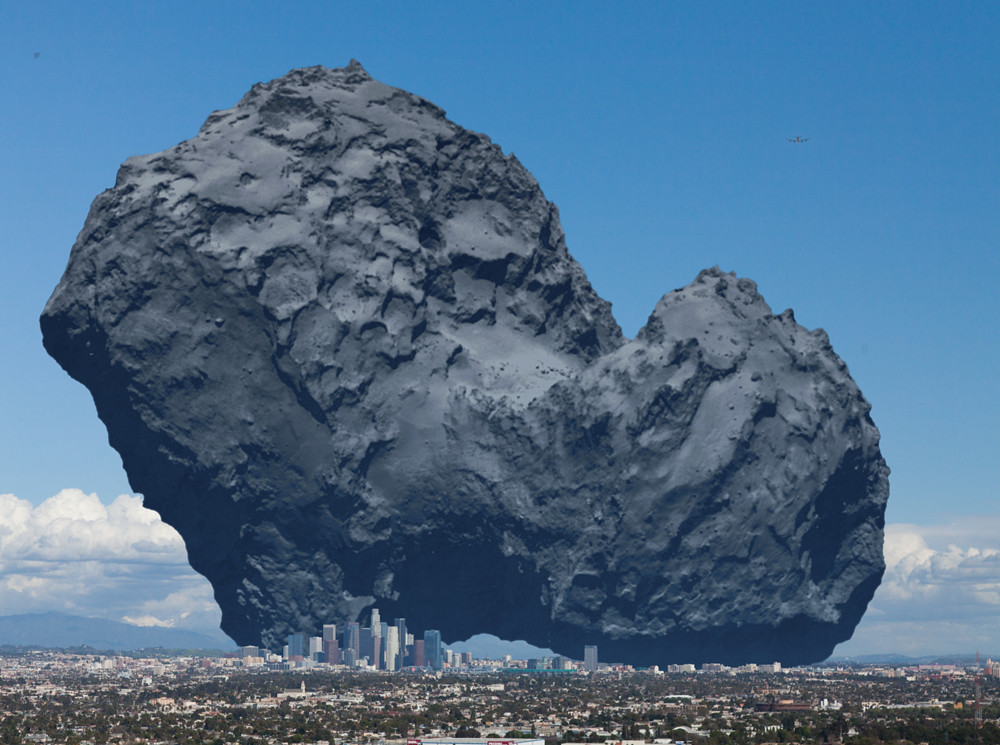
 Comments
Comments
Comets are hardly innocent little cosmic snowballs. They average over 6 miles (10 km) in diameter and hurtle through space with incredible speeds, giving them an order of magnitude more destructive power than an asteroid of the same mass.
Every once in a while, astronomers discover comets much bigger than the norm. For example, the record-breaking Hale-Bopp, dubbed the ‘Great Comet’ back in 1997, spanned a diameter of 18.6 miles (30 km) – larger than New York City! Now, scientists from the International Dark Energy Survey Project have determined that a new mega-comet approaching the solar system is over 5 times larger than that.
In 2014, two astronomers named Pedro Bernardinelli and Gary Bernstein at the University of Pennsylvania spotted a distant unrecorded celestial object. Because of its orbit and sheer size, it was initially thought to be a dwarf planet but was later reclassified after showing signs of comet-like activity.
The celestial giant is known as the Bernardinelli-Bernstein comet in honor of the astronomers who discovered it, and has a diameter of a whopping 100 miles (160 km). This makes it the largest comet ever discovered. This comet is larger than Mars’ moons Phobos and Deimos combined (and is also the exact same diameter as the second Death Star in Return of the Jedi).
Astronomers believe that the icy behemoth will pass through our planetary system with its closest approach to Earth a decade from now, in the year 2031.
Composition by @willgater. CC BY SA
In a tweet by Will Gater, he highlights just how big Bernardinelli-Bernstein is by comparing it to Comet 67P. Comet 67P itself is no small comet, see how it dwarfs Los Angeles in this render by anosmicovni.

Render by anosmicovni on Flickr
While Bernardinelli-Bernstein is a massive comet, there is no cause for concern. Bernardinelli-Bernstein will pass about 11 AU (Astronomical Units – the distance between the Sun and Earth) from the Sun. At that distance, it will most likely skim by Saturn’s orbit between Uranus, posing no threat to Earth.
Before its approach to Saturn, scientists believe the comet will begin to demonstrate classic characteristics of other comets, like the formation of a tail and coma, making it more distinguishable. In the coming decade, the Bernardinelli-Bernstein comet will likely put on quite a display for astronomers and leave us Earthlings in an utter state of amazement.
Featured Image Credit NOIRLab/NSF/AURA/J. da Silva
Enjoy reading Space Explored?
Help others find us by following in Apple News and Google News. Be sure to check us out on YouTube, Twitter, Facebook, and Instagram, join our Discord, join the discussion on our Reddit, and don’t forget the Space Explored podcast!
source:spaceexplored.com









